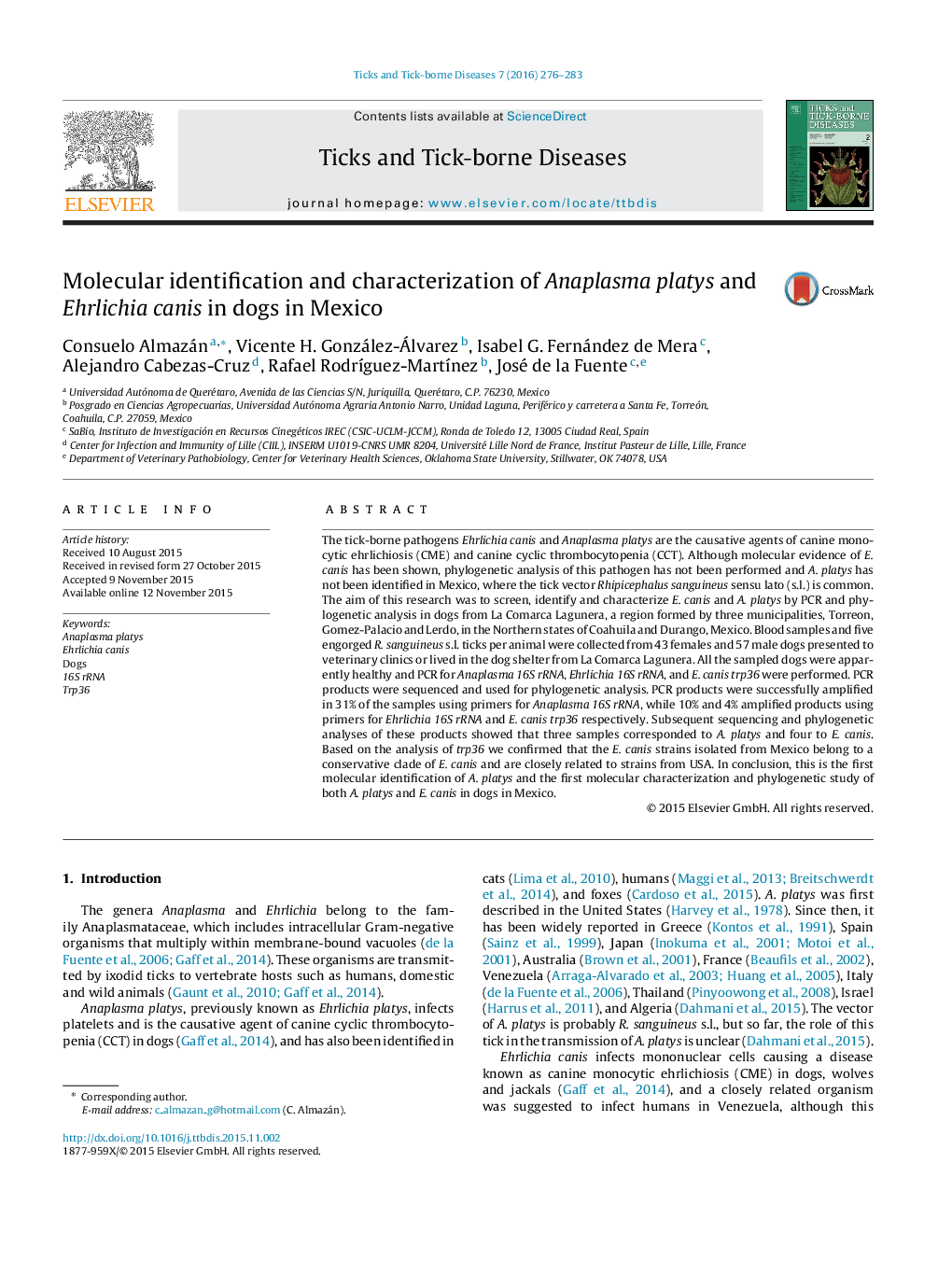| Article ID | Journal | Published Year | Pages | File Type |
|---|---|---|---|---|
| 5807110 | Ticks and Tick-borne Diseases | 2016 | 8 Pages |
The tick-borne pathogens Ehrlichia canis and Anaplasma platys are the causative agents of canine monocytic ehrlichiosis (CME) and canine cyclic thrombocytopenia (CCT). Although molecular evidence of E. canis has been shown, phylogenetic analysis of this pathogen has not been performed and A. platys has not been identified in Mexico, where the tick vector Rhipicephalus sanguineus sensu lato (s.l.) is common. The aim of this research was to screen, identify and characterize E. canis and A. platys by PCR and phylogenetic analysis in dogs from La Comarca Lagunera, a region formed by three municipalities, Torreon, Gomez-Palacio and Lerdo, in the Northern states of Coahuila and Durango, Mexico. Blood samples and five engorged R. sanguineus s.l. ticks per animal were collected from 43 females and 57 male dogs presented to veterinary clinics or lived in the dog shelter from La Comarca Lagunera. All the sampled dogs were apparently healthy and PCR for Anaplasma 16S rRNA, Ehrlichia 16S rRNA, and E. canis trp36 were performed. PCR products were sequenced and used for phylogenetic analysis. PCR products were successfully amplified in 31% of the samples using primers for Anaplasma 16S rRNA, while 10% and 4% amplified products using primers for Ehrlichia 16S rRNA and E. canis trp36 respectively. Subsequent sequencing and phylogenetic analyses of these products showed that three samples corresponded to A. platys and four to E. canis. Based on the analysis of trp36 we confirmed that the E. canis strains isolated from Mexico belong to a conservative clade of E. canis and are closely related to strains from USA. In conclusion, this is the first molecular identification of A. platys and the first molecular characterization and phylogenetic study of both A. platys and E. canis in dogs in Mexico.
